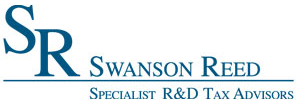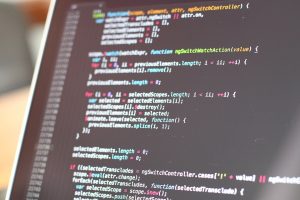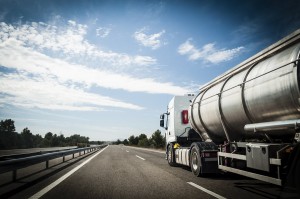South Carolina Patent of the Month – March 2025
Soteria Battery Innovation Group has introduced a groundbreaking solution to mitigate e-bike battery fires. Their patented technology, detailed in U.S. Patent No. 12,249,684, titled [...]
Transportation Case Study
Business Scenario
This case study exemplifies the application of key legislative requirements for qualifying R&D activities as they apply to relevant activities in the transportation industry.
Earhart Engineering is a widely renowned engineering company specializing in modern building of transportation methods, systems and equipment.
Dedicated to being one step ahead of its competitors, Earhart Engineering proposed an R&D plan to create the ‘Self-e,’ an electric, self-operating vehicle/aircraft. Earhart’s main objective was to develop a legal transportation vehicle/aircraft using battery technology that would allow it to travel up to 500 miles without requiring a recharge, while being completely machine operated.
To qualify for the Research and Experimentation Tax Credit, Earhart Engineering had to make sure its “qualified research” met four main criteria, known and developed by Congress as The Four-Part Test. After self-assessing, Earhart Engineering declared the following experiments as R&D work.
Earhart Engineering’s Eligible R&D Activities
Design and development of a series of prototypes to achieve the technical objectives (design of the Self-e vehicle/aircraft).
The hypothesis for this R&D activity was that designing, testing and evaluating various concepts would contribute to a more efficient and effective prototype testing phase.
After two years of design and experimentation, Earhart Engineering concluded that its theoretical design experiments showed that such designs were feasible but needed to be prototyped and fully tested to prove the hypothesis.
Trials and analysis of data to achieve results that can be reproduced to a satisfactory standard and to test the hypothesis (prototype development and testing of the Self-e vehicle/aircraft).
Earhart Engineering’s hypothesis for this experiment was that developing and implementing the various design components would allow refinement and tweaking of the final product to achieve the technical objectives.
After two years of trial and error, Earhart Engineering had created a vehicle capable of performing the main functions of the ‘Self-e’ but was below the company’s expectations overall. Earhart Engineering concluded that it was on the right track, and that it would continue to work on improving its design until it met its targeted performance criteria.
Background research to evaluate current knowledge gaps and determine feasibility (background research for the design of the Self-e).
Earhart Engineering engaged in background research for two years which included activities such as literature search and review, consultation with industry professionals and potential customers, and preliminary equipment and resources review with respect to capacity, performance and suitability for the project.
These specific background research activities qualified as R&D because they assisted in identifying the key elements of the research project.
Ongoing analysis of customer or user feedback to improve the prototype design (feedback R&D of the Self-e).
Feedback research and development work for the Self-e included ongoing analysis and testing to improve the efficiency and safety of the project, continuous development and modification, and commercial analysis and functionality of review.
Earhart Engineering believed these activities were necessary to evaluate the performance capabilities of the new design in the field and to improve any flaws in the design, therefore qualifying as R&D.
Live Webinar: The R&D Tax Credit in the Transportation Industry
Duration: 60 Minutes
Learning objectives include:
- An overview of R&D Tax Credits
- Identify Qualifying Research Activities
- Define the 4-Part Test
- How to substantiate activities through documentation
- Identify Qualifying Research Expenses
Cost: FREE
CE/CPE credits: Worth one hour
Knowledge Level: Basic*
Field of Study: Taxation
Qualified Research Defined
Qualified research consists of research for the intent of developing new or improved business components. A business component is defined as any product, process, technique, invention, formula, or computer software that the taxpayer intends to hold for sale, lease, license, or actual use in the taxpayer’s trade or business.
The Four-Part Test
Activities that are eligible for the R&D Credit are described in the “Four-Part Test” which must be met for the activity to qualify as R&D.
- Permitted Purpose: The purpose of the activity or project must be to create new (or improve existing) functionality, performance, reliability, or quality of a business component.
- Elimination of Uncertainty: The taxpayer must intend to discover information that would eliminate uncertainty concerning the development or improvement of the business component. Uncertainty exists if the information available to the taxpayer does not establish the capability of development or improvement, method of development or improvement, or the appropriateness of the business component’s design.
- Process of Experimentation: The taxpayer must undergo a systematic process designed to evaluate one or more alternatives to achieve a result where the capability or the method of achieving that result, or the appropriate design of that result, is uncertain at the beginning of the taxpayer’s research activities.
- Technological in Nature: The process of experimentation used to discover information must fundamentally rely on principles of hard science such as physical or biological sciences, chemistry, engineering or computer science.
What records and specific documentation did Earhart Engineering keep?
Similar to any tax credit or deduction, Earhart Engineering had to save business records that outlined what it did in its R&D activities, including experimental activities and documents to prove that the work took place in a systematic manner. Earhart Engineering saved the following documentation:
- Literature review
- Background research
- Meeting notes or minutes or progress reports
- Project records / laboratory notes
- Conceptual sketches
- Design drawings
- Photographs / videos of various parts or components
By having these records on file, Earhart Engineering confirmed that it was “compliance ready” — meaning if it was audited by the IRS, it could present documentation that illustrated the progression of its R&D activity, ultimately proving its R&D eligibility.





































